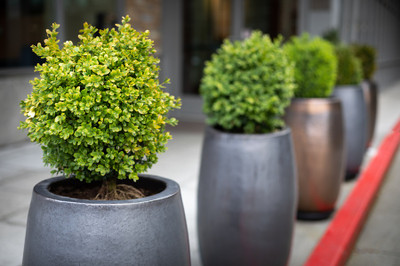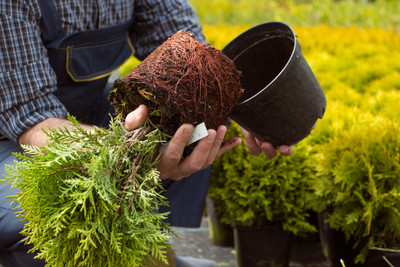Arizona-Inspired Landscape Ideas for a Beautiful, Drought-Resistant Yard
Posted by Jason Wyrwicz on Aug 4th 2025
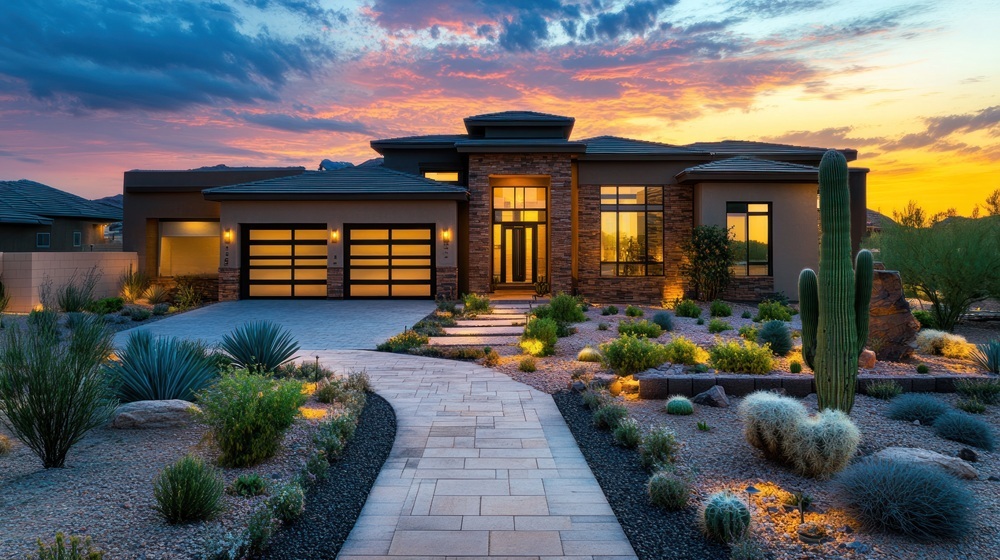
Living in Arizona means learning how to thrive alongside the desert. With soaring summer temperatures, limited rainfall, and soil that’s more gravel than garden, traditional landscaping just doesn’t cut it here. But that doesn’t mean your yard can’t be stunning.
By embracing Arizona’s natural beauty and choosing drought-resistant designs, you can create an outdoor space that’s both visually compelling and ecologically smart.
This guide offers practical, Arizona-desert landscape ideas—from smart irrigation to native planting palettes—to help you design a beautiful, sustainable yard.
Key Takeaways
|
Benefits of Drought-Resistant Landscaping
Arizona homeowners face high water costs, seasonal watering restrictions, and intense heat. A drought-resistant yard isn’t just a trend — it’s a necessity. Here’s why it pays off:
✅Lower Water Bills: Native and desert-adapted plants need minimal irrigation once established.
✅Less Maintenance: Say goodbye to weekly mowing and fertilizing.
✅Supports Local Wildlife: Plants like desert milkweed and penstemon attract pollinators like hummingbirds and butterflies.
✅Incentives: Many Arizona cities, including Tucson, Scottsdale, Peoria, and Prescott, offer rebates and financial incentives for homeowners who replace turfgrass with low-water-use or native plants, install drip irrigation systems, or adopt rainwater harvesting systems.
|
Offers up to $5 per square foot for turf removal and additional incentives for trees and basin capacities. |
Scottsdale’s program also provides rebates for grass removal with specific requirements about irrigation conversion and planting water-efficient plants. |
Other municipalities, such as Peoria and Prescott, offer credits and rebates for irrigation timers, rainwater harvesting, and xeriscape installation. |
Key Design Elements for Arizona Yards
Native Plants and Succulents
Native plants are the cornerstone of most successful backyard landscape ideas in Arizona. They’re built to survive the extremes — intense sun, rocky soils, and monsoon swings.
Try these standouts:
Agave
Agave plants are desert icons. With their striking rosettes and architectural symmetry, they act as focal points in any landscape.
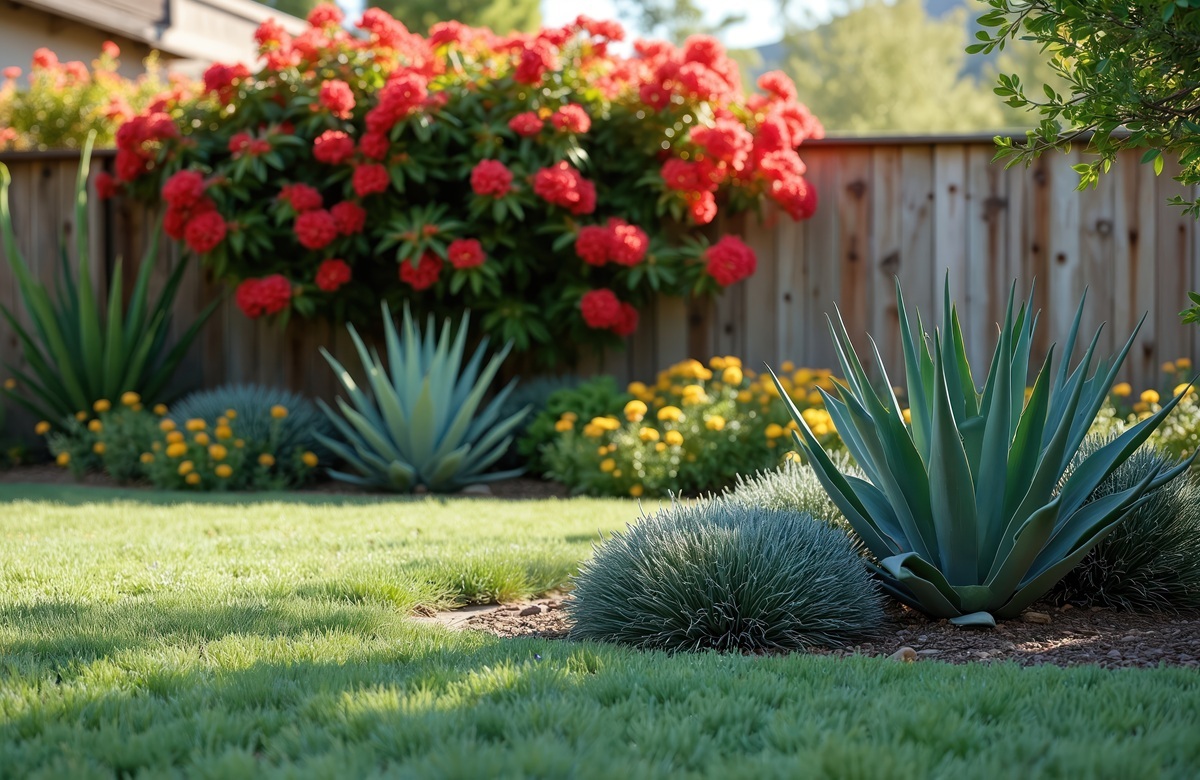
Benefit: Extremely drought-tolerant and available in a wide range of sizes and colors, from the silvery blue of Agave parryi to the compact and striped Agave lophantha.
Interesting Feature: Most agaves flower once at the end of their life cycle—sending up a dramatic, towering stalk—then die, often leaving behind offshoots or “pups” to continue the legacy.
Ocotillo
Don’t let the bare, thorny stems fool you — ocotillo is one of the most dynamic plants in the desert. After rainfall, it bursts into green leaves almost overnight, topped with fiery red-orange flower clusters in spring and early summer.
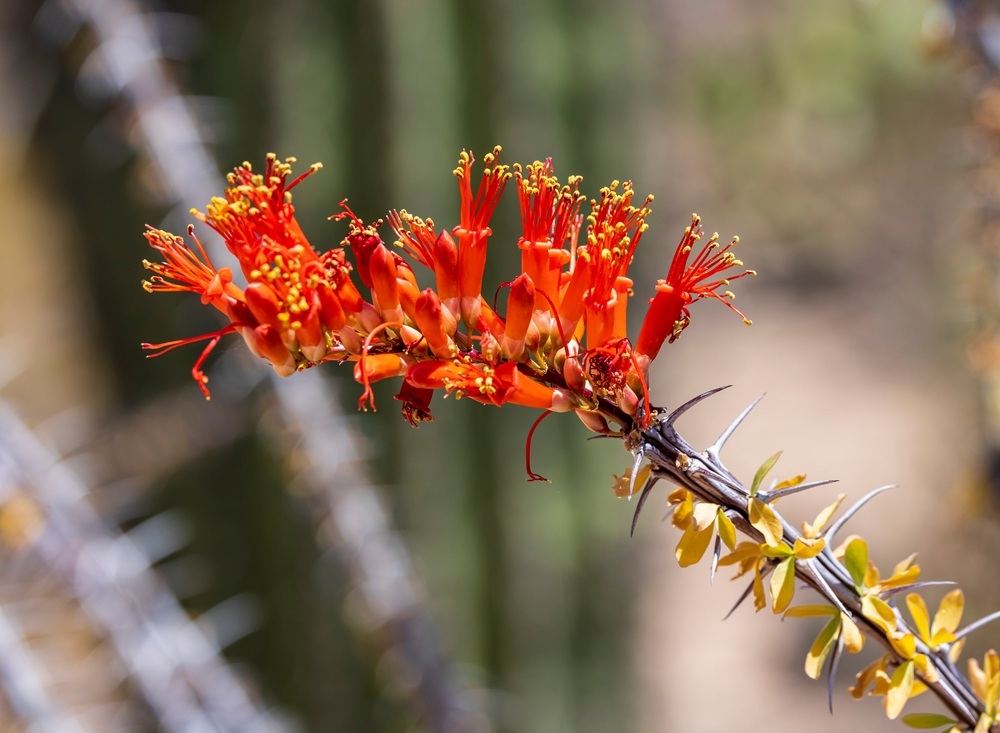
Benefit: Adds vertical height and dramatic movement, especially in windy areas.
Interesting Feature: It’s technically a shrub, not a cactus, and can leaf out multiple times a year depending on rainfall.
Penstemon
Penstemons are delicate-looking perennials with tubular flowers that appear in spring and early summer. The red-flowered Firecracker Penstemon is a favorite for hummingbirds.
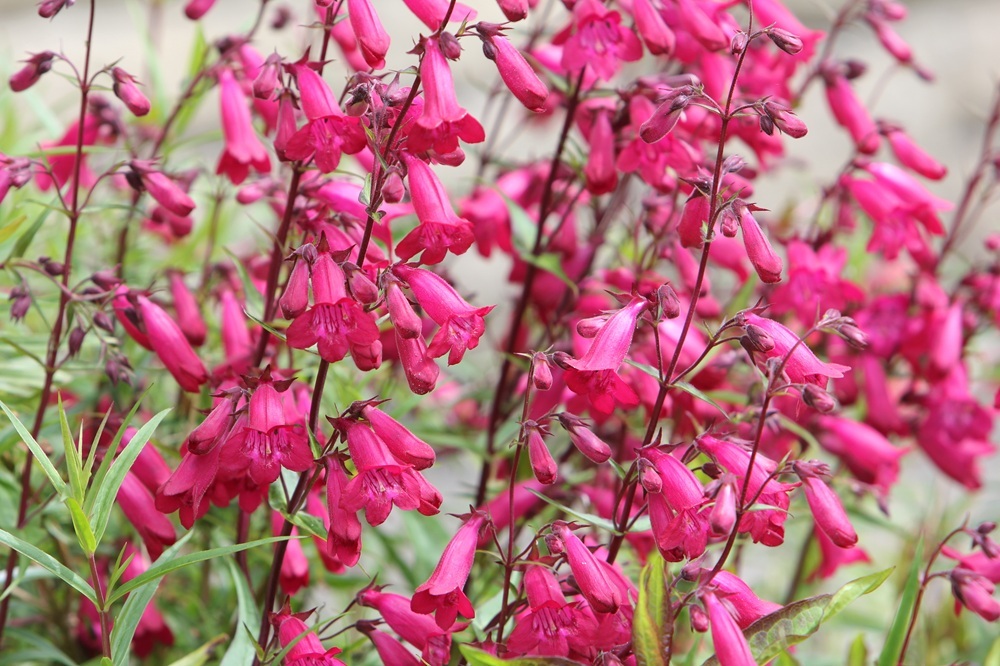
Benefit: Blooms add early-season color and attract beneficial pollinators.
Interesting Feature: The flowers come in reds, purples, pinks, and even blues, and they’re a reliable way to add vibrant contrast to rockier parts of your yard.
Desert Marigold
A tough little wildflower with cheerful yellow blooms that appear nearly year-round, especially after rains.
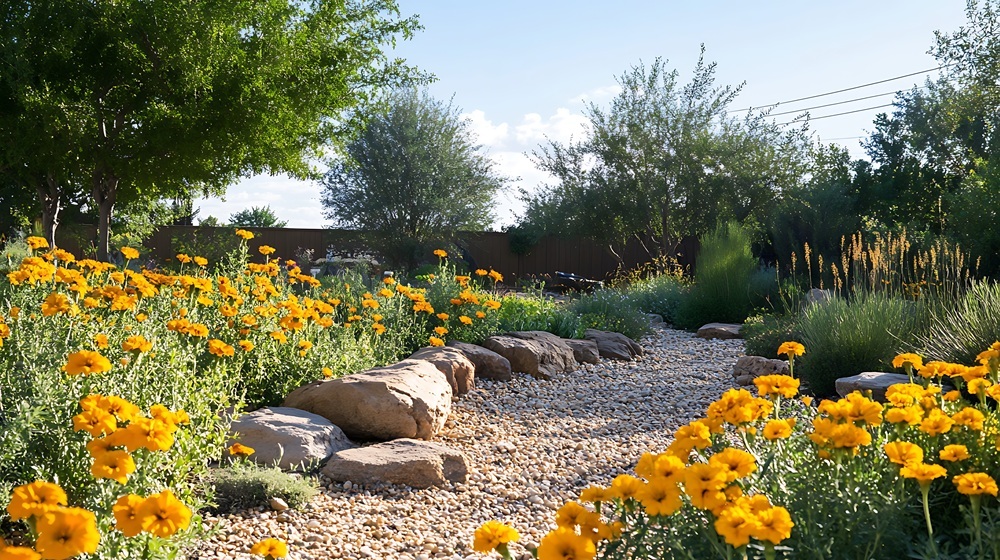
Benefit: Thrives in full sun and poor soil with very little supplemental water.
Interesting Feature: Great for naturalizing areas. This plant reseeds easily and fills in empty spaces with a soft, native touch.
Yucca
With sword-like leaves and tall flower stalks, yuccas bring bold texture and vertical interest to your Arizona backyard landscape. Several native species exist, including the Banana Yucca, which also produces edible fruits.
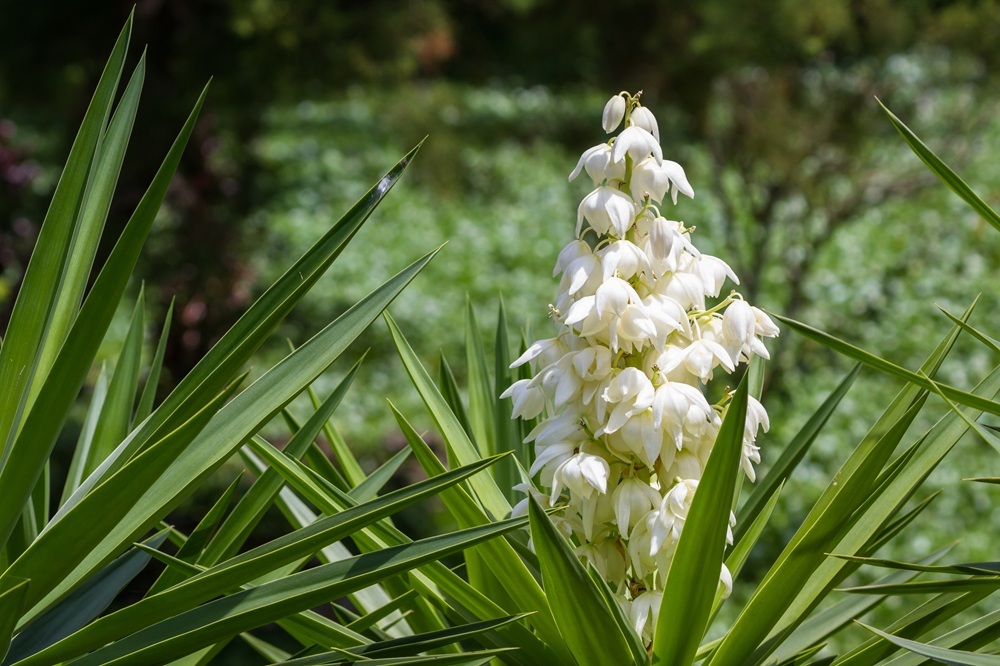
Benefit: Very low water use and tolerant of full sun and wind.
Interesting Feature: When in bloom, yucca flowers attract moths and other pollinators; the Banana Yucca was also used as a food source by Indigenous peoples.
Fiberglass Planters for Desert Landscapes
While the Arizona sun can be unforgiving, it also provides an opportunity to showcase statement pieces that thrive in the light, like fiberglass planters. These durable, lightweight containers are ideal for desert yards where flexibility, heat resistance, and sleek design all matter.
Unlike ceramic or terra cotta pots, fiberglass doesn’t crack under temperature extremes, making it perfect for Arizona’s hot days and cool nights.
Comparing Planter Materials for Arizona Landscapes
|
Material |
Heat Resistance |
Weight |
Durability in Arizona |
Water Retention |
Maintenance Needs |
Design Versatility |
|
Fiberglass |
Excellent |
Very Light |
Doesn’t crack or fade |
Moderate |
Low |
High (colors, finishes, sizes) |
|
Terra Cotta |
Poor |
Medium |
Cracks in heat/cold |
Drains quickly |
Medium |
Limited (natural tones) |
|
Ceramic |
Moderate |
Heavy |
Can crack or fade |
High |
High (glazing chips, fragility) |
Moderate to High |
|
Plastic |
Poor to Moderate |
Very Light |
Warps or degrades in the sun |
Moderate to high |
Low (but short lifespan) |
Low to Moderate |
|
Key Takeaways:
|
 |
 |
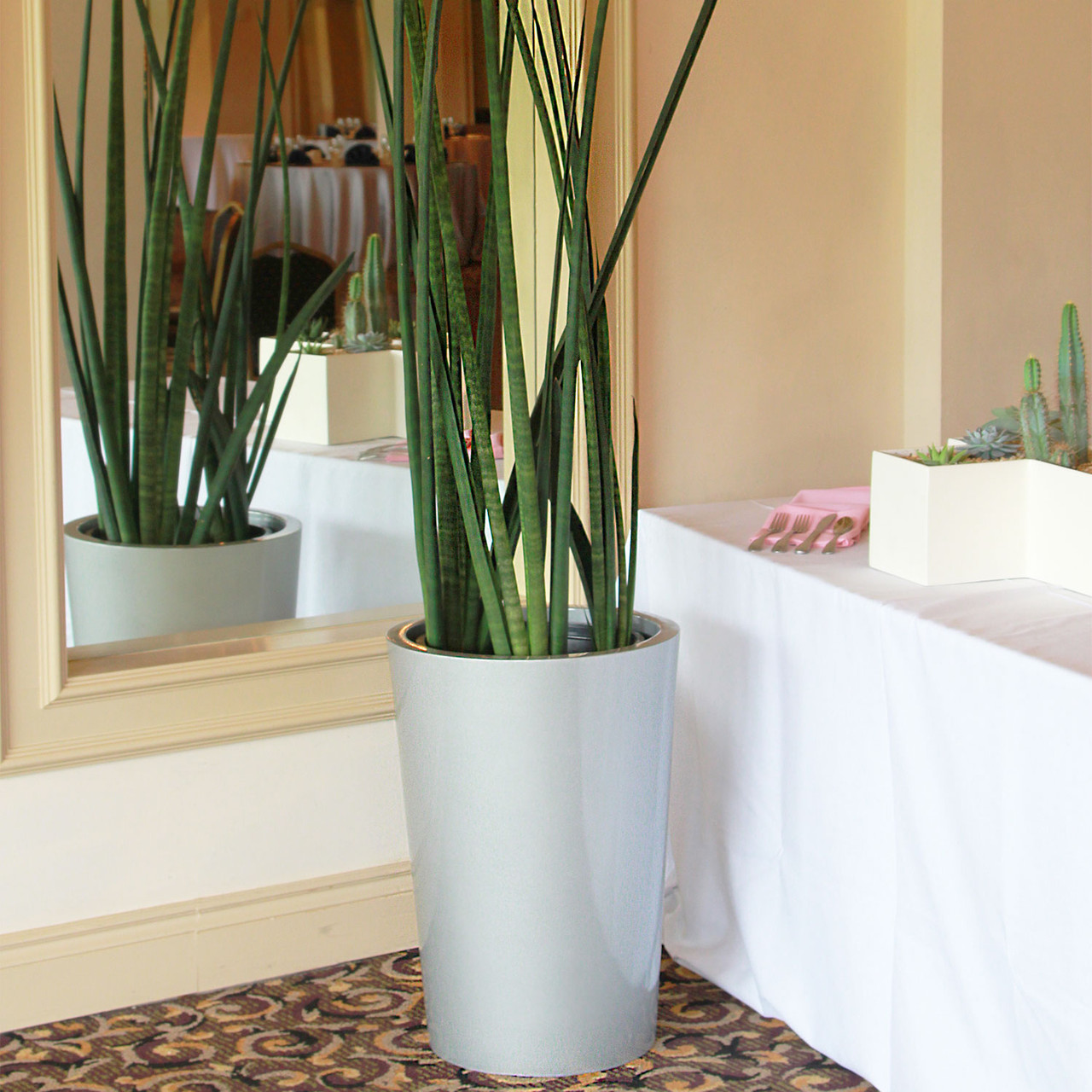 |
 |
Desert-Friendly Hardscaping
With limited rainfall and intense heat, using the right materials in the right places can help manage water flow, reduce maintenance, and anchor your landscape with natural texture.
Here are a few popular options and how to use them effectively:
Decomposed Granite (DG)
DG is a finely crushed rock that compacts into a stable surface, perfect for walkways, patio bases, or groundcover around plants. Works in the back and front yards Arizona landscape projects.
- Tip: Use a stabilizer additive if you want a firmer, mud-free walking path or patio.
- Why it works: It mimics the natural desert floor, allows rainwater to filter through, and has a soft, muted appearance that complements native plants.
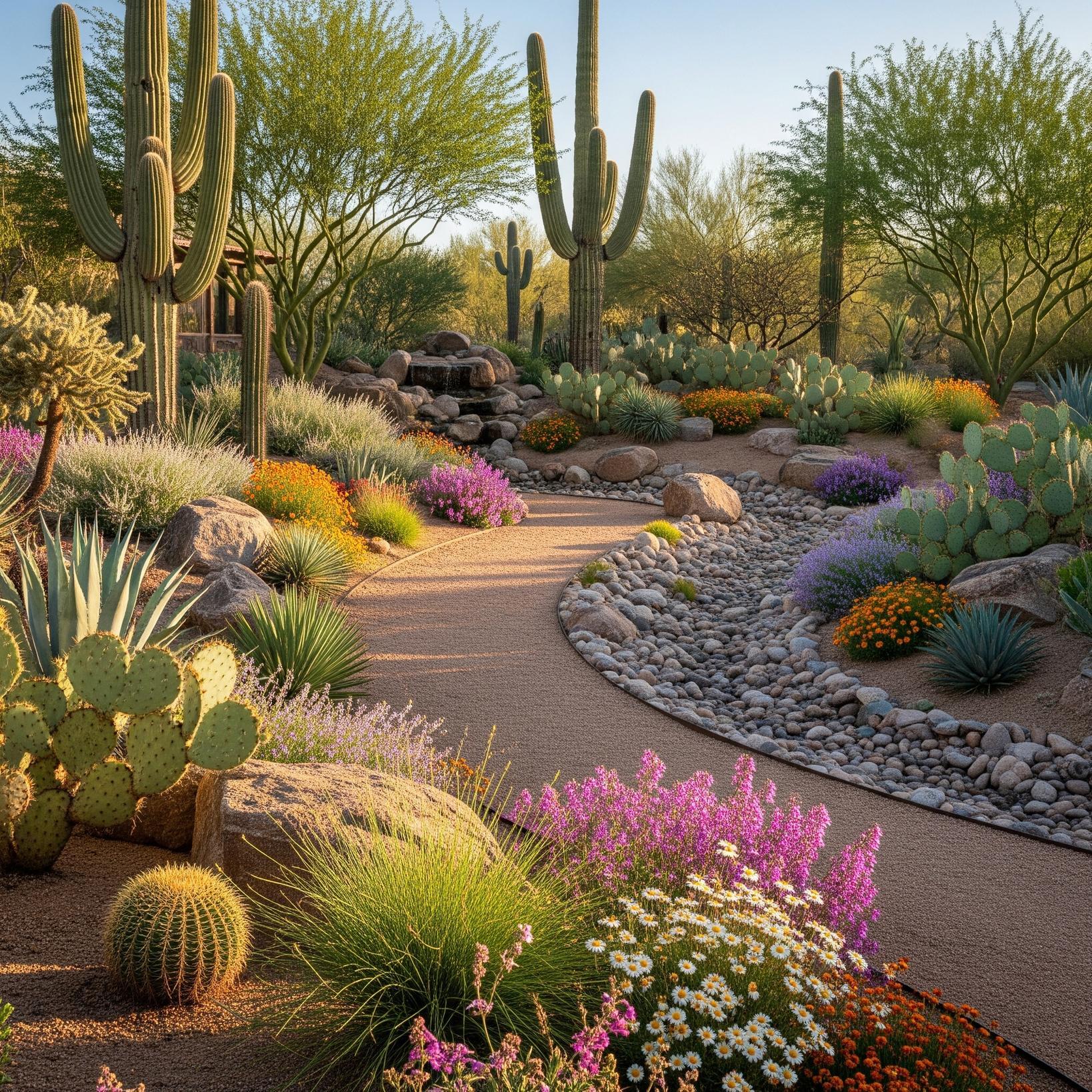
Crushed Gravel
Gravel comes in various sizes and colors, offering design flexibility while improving drainage.
- Tip: Choose a gravel color that complements your home’s exterior or regional hues — desert rose, beige, or terra cotta tones tend to work well.
- Pro Move: Lay landscape fabric underneath to prevent weeds, and rake the surface regularly to keep it tidy.
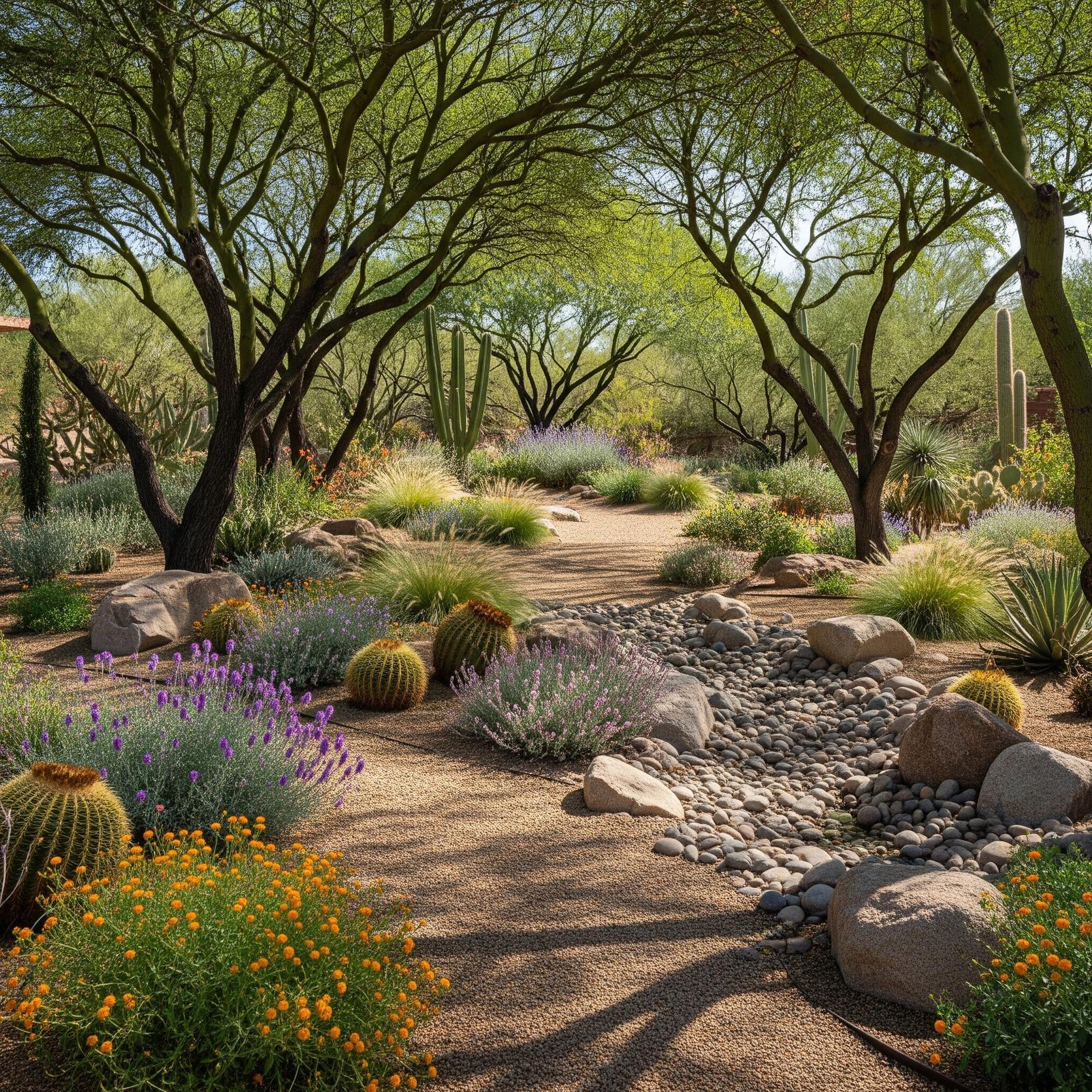
Flagstone & Natural Stone Pavers
Stone adds structure and elegance. Use flagstone for patios or stepping stone paths through planting beds.
- Tip: Dry-lay stones with gaps between them and fill in with gravel or drought-tolerant groundcovers like creeping thyme.
- Added Value: Natural stone retains less heat than concrete, making it cooler underfoot, which is especially important for walkable areas.

Boulders and Accent Rocks
Strategically placed boulders can define planting zones, add vertical contrast, or anchor a corner of the yard.
- Tip: “Bury” one-third of each boulder underground to make it look naturally embedded.
- Visual Tip: Group boulders in odd numbers and mix sizes to avoid a staged look.
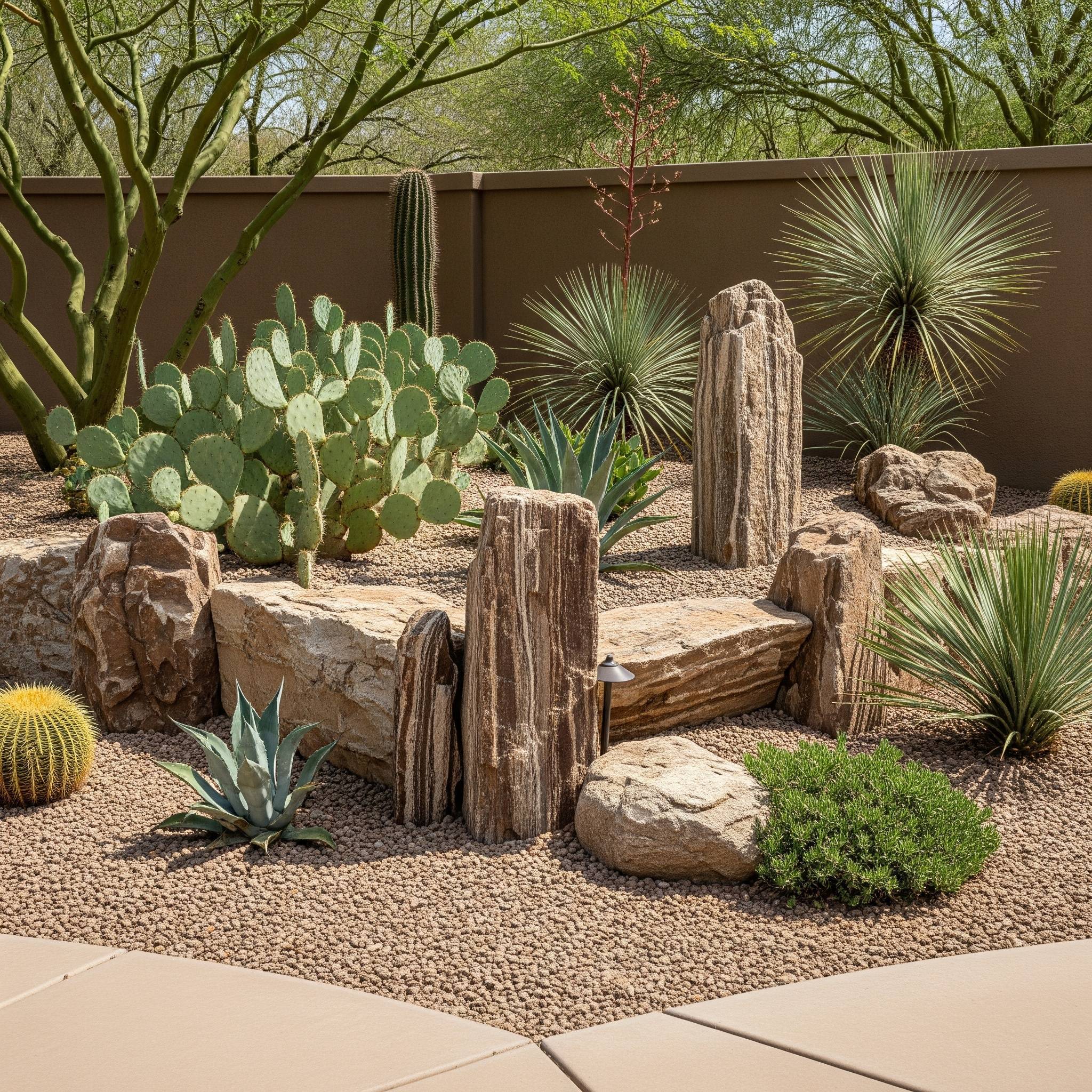
|
Design Insight Use a mix of textures — smooth gravel next to coarse stone, matte against shine — to mimic Arizona’s rugged terrain and create a dynamic layout. |
Shading and Structures
Sun is abundant in Arizona, but sometimes too much of a good thing becomes a problem. Creating shaded zones in your yard makes it possible to enjoy outdoor spaces even in the height of summer.
Here’s how to introduce shade while adding beauty and function:
Pergolas and Arbors
Pergolas provide partial shade while maintaining airflow and an open feel.
- Tip: Train climbing vines like queen’s wreath, trumpet vine, or even grapevines over the top to soften the structure and enhance shade.
- Add Style: Use natural wood or rusted metal for a desert-modern look, or paint it in a warm adobe tone to blend into a Southwest palette.

Ramada Shelters
Unlike pergolas, ramadas have solid roofs, offering full protection from the sun and rain. They’re perfect for outdoor kitchens, lounge areas, or al fresco dining spots.
- Tip: Position your ramada near the home to extend indoor living space outward.
- Bonus: Add fans, lighting, or curtains for comfort and atmosphere.
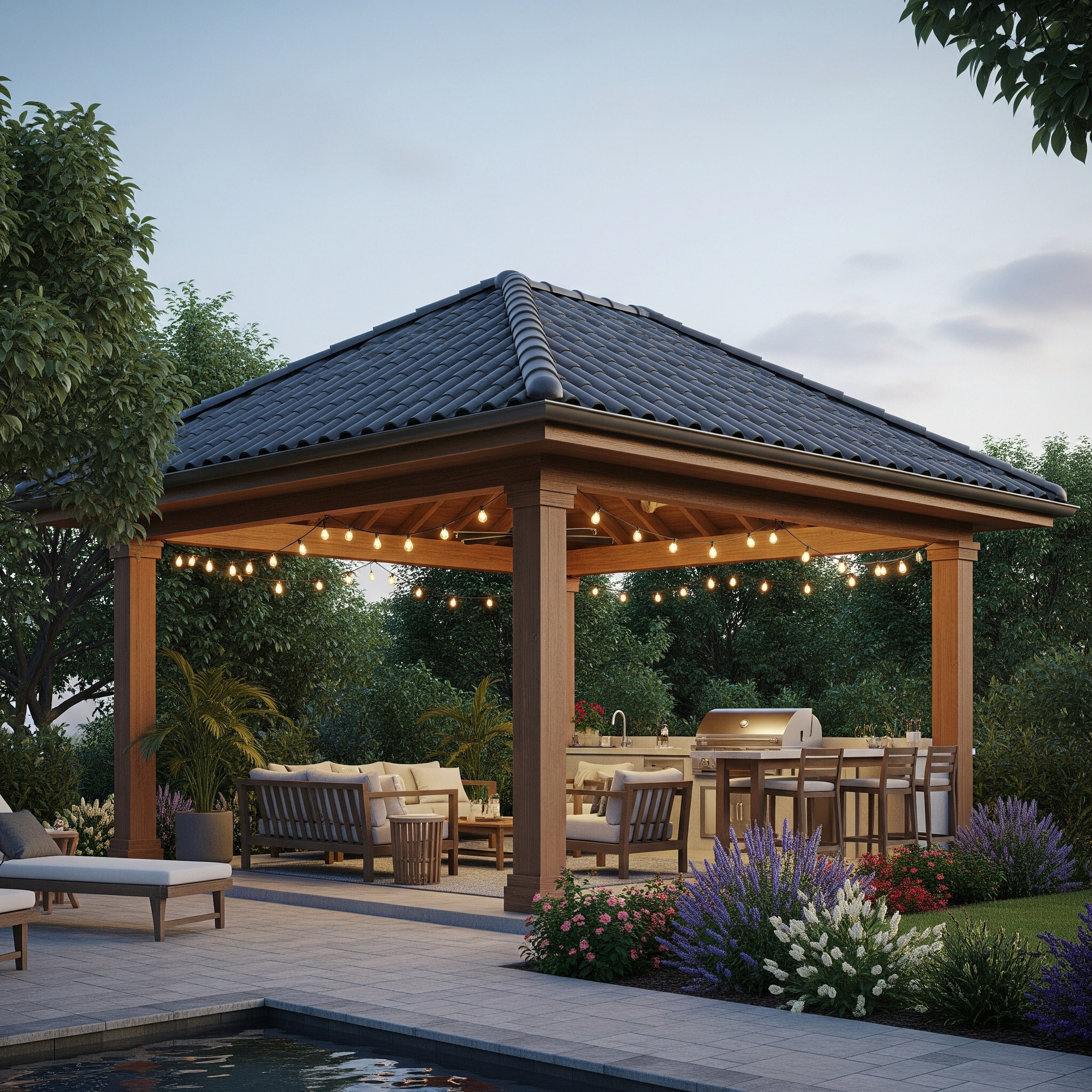
Shade Sails
Shade sails offer a clean, modern option and are especially useful in awkward or narrow spaces.
- Tip: Overlap multiple sails in different angles or colors for a bold architectural statement.
- Best Use: Cover play areas, garden beds, or patios without the need for bulky supports.
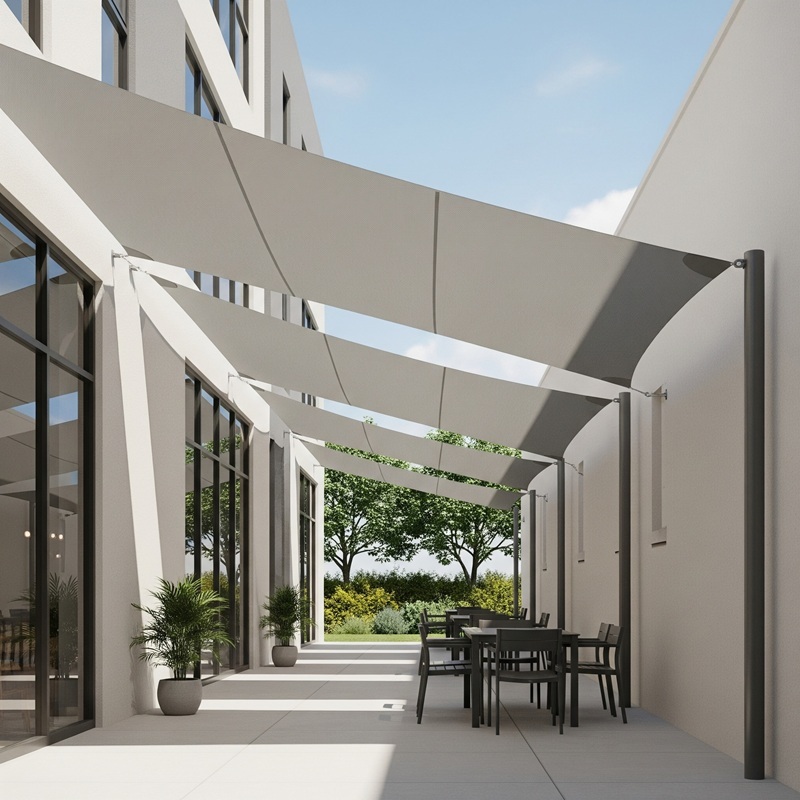
Desert Shade Trees
Native or desert-adapted trees are a long-term investment in beauty and comfort.
- Top Picks:
- Palo Verde: Fast-growing, drought-tolerant, and produces vibrant yellow blooms in spring.
- Velvet Mesquite: Provides broad, dappled shade and supports local wildlife.
- Desert Willow: Offers delicate, orchid-like flowers and an open canopy ideal for filtered light.
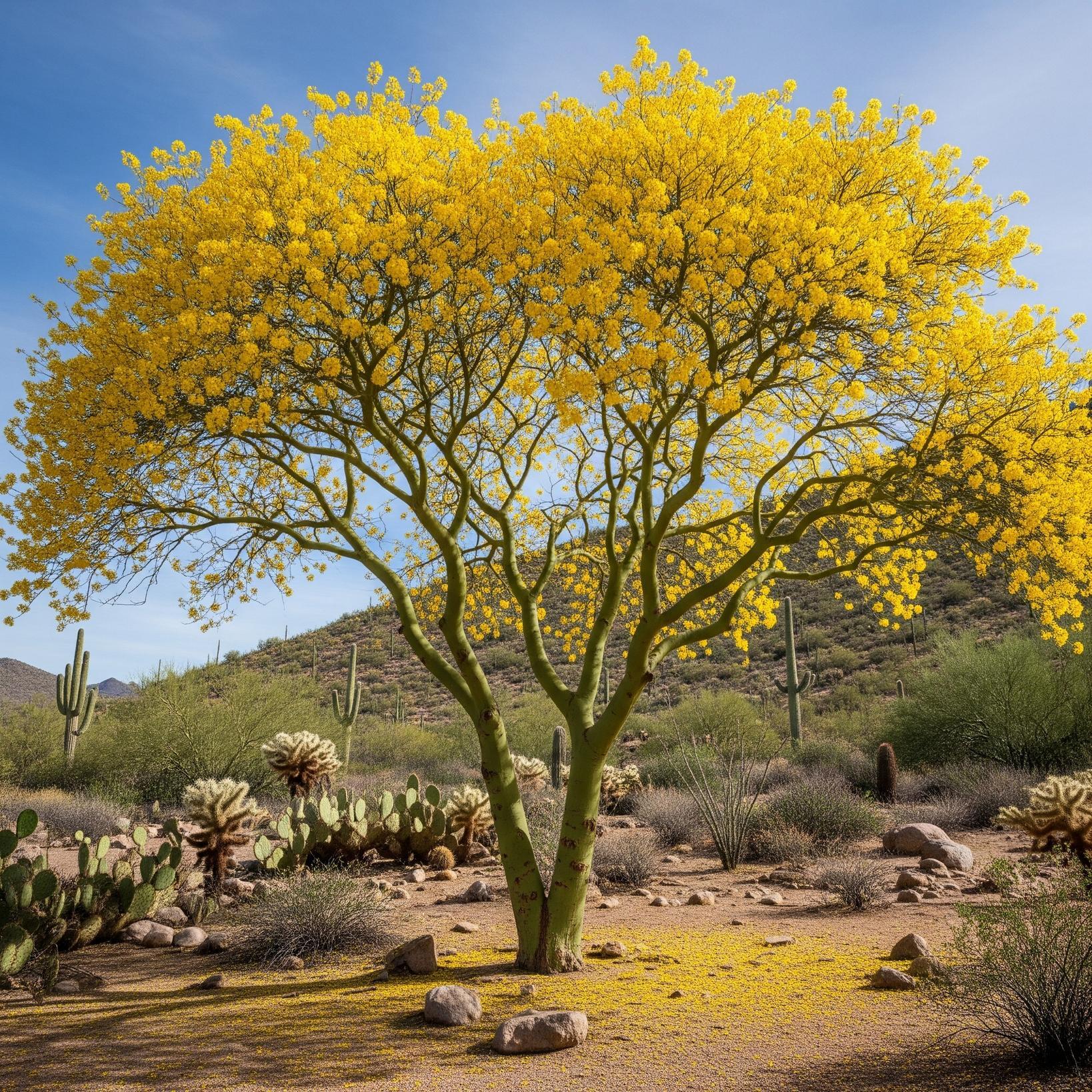
|
Design Tip Think vertically. Even in a small yard, layering tall trees with mid-height ramadas or pergolas creates a natural microclimate that can reduce ambient temperatures by several degrees. |
Efficient Irrigation
Old-fashioned sprinklers don’t belong in the desert. A better system pays off quickly, so consider your choice carefully when designing an Arizona garden.
Here’s how to get the most out of every drop:
Drip Irrigation Systems
Drip irrigation delivers water slowly and directly to a plant’s root zone, where it’s needed most.
- Tip: Use pressure-compensating emitters for even water flow, especially on sloped yards or long runs.
- Bonus: It reduces evaporation and water waste compared to sprinklers, and it’s nearly invisible once installed.
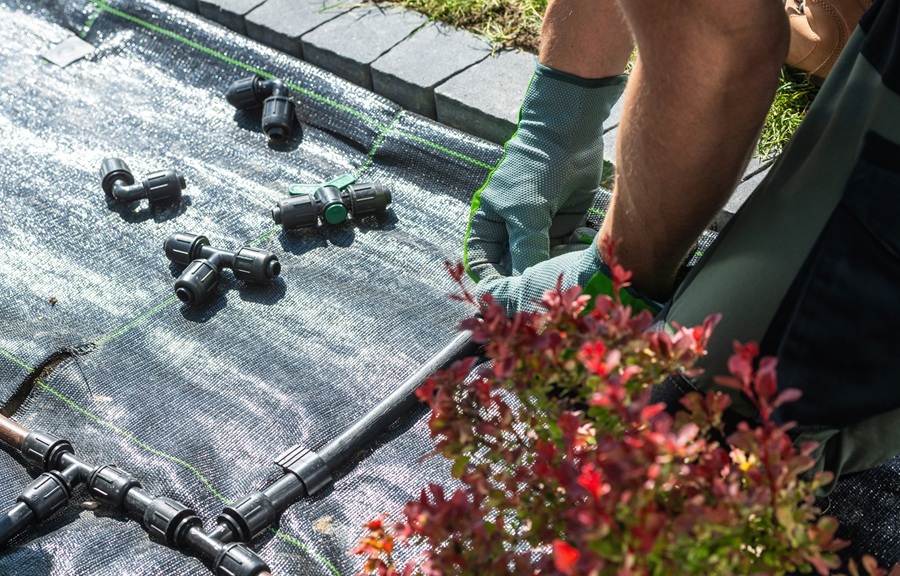
Smart Timers and Moisture Sensors
Smart irrigation controllers can adjust watering schedules based on real-time weather, soil moisture, and plant needs.
- Tip: Look for models compatible with your smartphone for easy monitoring.
- Why It Matters: Avoid overwatering after a rare Arizona rain and cut back during seasonal transitions.
Zoning by Plant Needs
Not every plant needs the same amount of water. Creating irrigation “zones” ensures you’re not soaking a cactus just to water a tree.
- Tip: Group thirsty plants (like citrus trees) near one another and separate them from low-water areas.
Rainwater Harvesting
Even brief desert rainstorms can yield gallons of usable water if you collect it wisely.
- How: Use rain barrels, cisterns, or even passive contouring like swales to channel runoff to your plant beds.
- Tip: Check local ordinances. Many Arizona cities not only allow rainwater harvesting but also offer rebates or guidance on installing systems.
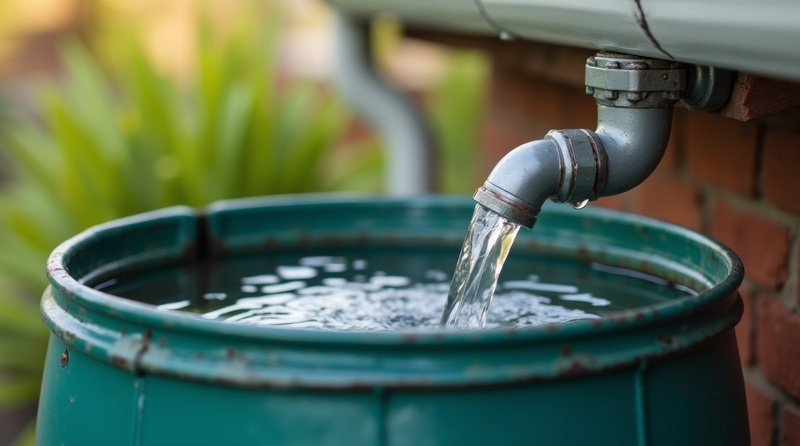
Greywater Reuse (Bonus Idea)
Laundry-to-landscape systems reuse washing machine water to irrigate trees and shrubs.
- Tip: Use only biodegradable, plant-safe detergents.
- Best Use: Direct greywater to non-edible plants like mesquites, palo verde, or ornamental grasses.
|
Maintenance Reminder Check filters and flush drip systems seasonally to prevent clogging — Arizona’s mineral-heavy water can leave deposits over time. |
Maintaining Your Arizona Landscape
Success in the desert doesn’t stop once the plants are in the ground. In fact, maintenance is what keeps a water-wise yard healthy, tidy, and long-lasting. Fortunately, desert-adapted landscapes typically require less upkeep than traditional lawns, but they still benefit from regular seasonal care and observation.
|
SPRING Spring is the clean-up season. Prune back any frost-damaged or dead branches on trees and shrubs, but wait until after the last frost date to avoid damaging tender new growth. Spring is also a good time to check your drip system for leaks or clogs, refresh mulch around plants, and begin a deep-watering schedule — about once every 10–14 days for most established natives. |
|
SUMMER Arizona’s hottest months demand careful watering practices. Water in the early morning, ideally before sunrise, to reduce evaporation. Watch your plants for signs of heat stress — wilted leaves, sunscald, or browning edges. Also, inspect irrigation emitters for mineral buildup, especially if your water is hard. If needed, use vinegar soaks to clean them out. |
|
FALL Considered one of the best times to plant in Arizona, fall offers mild temperatures and less transplant shock. It’s a great window for adding trees, shrubs, and perennials that can root in before winter. Fertilize if your soil is deficient (a soil test can tell you), but avoid high-nitrogen formulas that stimulate tender growth late in the season. |
|
WINTER While many plants go dormant, winter care is still important. Protect sensitive or young plants with frost cloth or light mulch, especially during overnight cold snaps. Turn off irrigation during rainy periods or when the soil stays moist, and keep an eye out for early weeds, which often sprout after winter rains. |
For weed control year-round, lay landscape fabric under gravel paths or rock beds and refresh mulch layers annually to suppress growth.
Avoid chemical herbicides near edible plants or native pollinator habitats—manual pulling or natural vinegar-based sprays are safer alternatives.
Common Mistakes to Avoid
Even the most enthusiastic gardeners can make decisions that end up creating more problems than solutions. Arizona’s landscape rewards thoughtful planning, but it can punish shortcuts or assumptions that work in other regions. Here are some of the most common missteps (and how to avoid them):
- Overwatering: A top mistake. Native plants evolved to handle drought and can actually suffer from too much water. Root rot, fungal disease, and pest issues often stem from excessive irrigation. Set your drip system to water deeply but infrequently — think once every 10–21 days, depending on the season and plant.
- Thirsty Turf: Traditional lawns like fescue or Kentucky bluegrass are not desert-friendly. They require constant watering, mowing, and fertilizing. If you need a grassy area, go with artificial turf or native grasses like blue grama that survive on minimal water.
- Wrong Plant, Wrong Place: Don’t fall for the nursery beauty that isn’t suited to Arizona’s climate. High-water plants like hydrangeas or non-native roses will struggle in the heat and alkaline soil. Always check a plant’s USDA hardiness zone, sun tolerance, and water needs before purchasing.
- Neglecting Shade: Many homeowners forget to factor in protection from the brutal summer sun. Without shade structures or trees, outdoor spaces become unusable, and sensitive plants can fry. Plan shade early in your design — not just for people, but for plants that appreciate dappled light during the hottest part of the day.
Other avoidable issues? Using black plastic under gravel (which traps heat and prevents water absorption), failing to space plants for their mature size, and forgetting to account for water runoff after monsoon storms. A bit of planning upfront leads to a thriving, low-maintenance yard that rewards you year after year.
Conclusion
Drought-resistant doesn’t mean dry or dull. Arizona’s natural palette offers a world of beauty — silvery sages, golden grasses, bold succulents, and rust-colored stone.
By embracing local materials and water-wise choices, you can create a space that’s uniquely yours and deeply in tune with the land. Whether you start small with a cactus garden or go big with a full yard redesign, each step brings you closer to a beautiful, sustainable landscape.
Your perfect desert yard isn’t a dream — it’s a plan. Let’s get planting!


